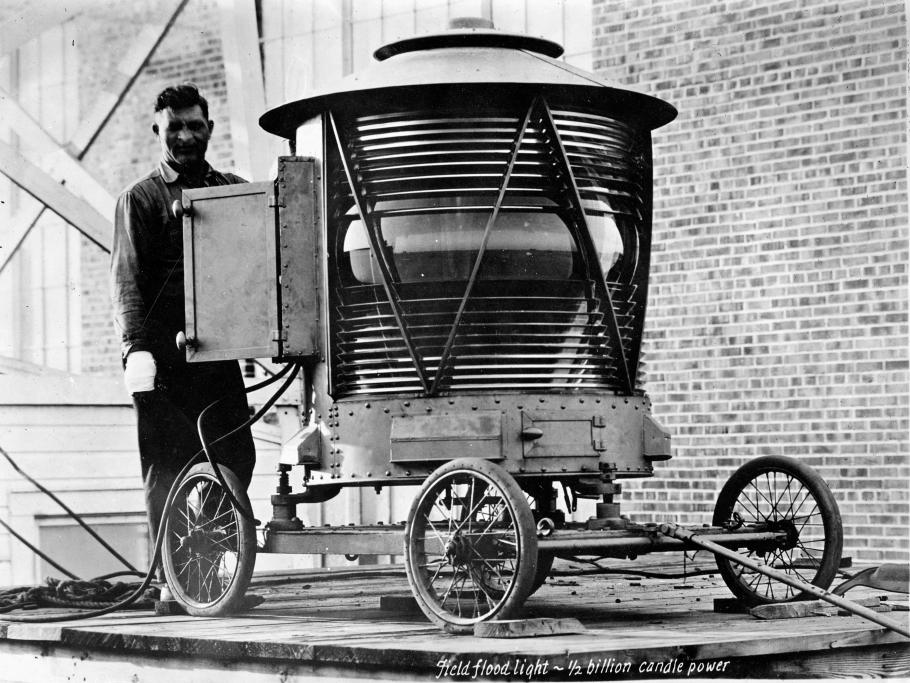What was it like to fly the mail, just over a decade after the Wrights first flight in 1903? How did pilots find their way? What about at night?
In 1911, the first mail was carried by plane. By 1918, the U.S. Air Mail Service was created and the first scheduled air mail flight took place. A few months after service began in 1918, the Army, who had initially flown air mail, withdrew from flying the mail and left the Post Office in charge with its own pilots and aircraft.
Compared to moving the mail by train, flying cut coast-to-coast delivery time by about a day. When regular overnight air mail service began in 1924, it slashed delivery time to 29 hours, almost three days faster than by rail.
What was it like to fly the mail?
Flight in this period was far from the relative comfort we experience on airplanes today. While novel and exciting, flying was loud and uncomfortable. Pilots and the occasional passenger sat in open cockpits exposed to wind and weather. Even in Europe, where large transports carried passengers in comparative luxury, the ride was harsh, loud, and uncomfortable.
Air mail pilots wore heavy flight suits instead of uniforms, but they were issued badges or wings for identification, as in this photo of pilot Wilfred A. "Tony" Yackey.
Of the more than 200 pilots hired by the Post Office from 1918 to 1926, 35 died flying the mail. Fatalities dropped after the first few years, but flying the mail remained a dangerous—and sometimes deadly—job.
"I have heard numerous reports of your stunting mail ships.... This is absolutely against regulations and further actions of the kind will merit disciplinary action."
-Superintendent D. B. Colyer scolding Wild Bill on his wild ways with an air mail airplane
Wild Bill flew the mail for eight years in the 1920s. He earned his nickname by breaking speed records and damaging airplanes. He was popular with other pilots but regularly scolded by his supervisors.
He died in 1928 when his airplane crashed on the New York to Chicago route. He was carrying a thousand pounds of mail, including a large shipment of diamonds. Only 10 pounds of mail were saved from the plane's wreckage, and the diamonds disappeared.
How did air mail pilots find their way?
"Flying 30 or 40 feet off the ground, I still couldn't find the railroad tracks... I kept looking for just one friendly landmark to let me know where I was."
-Bob Shank, one of the four original air mail pilots, on flying through fog
Early pilots navigated by looking for familiar landmarks on the ground: towns, rivers, railroads, race tracks, large buildings, and lakes.
Navigating by keeping the ground in view and following landmarks is called "contact flying." Today modern instruments can help pinpoint a pilot's location, but many pilots still use contact flying to find their way.
Joseph L. Mortensen navigated the air mail route from Salt Lake City, Utah, to Reno, Nevada, in 1920 using this scrolling map and knee board. This object is called a "knee board" because a pilot would strap it to their leg. They would turn the knobs to scroll the map as they flew their route.
Why would this be more useful than a folding map?
Flying at Night
To speed up air mail service, the Post Office turned to flying the mail throughout the night, which was a dangerous undertaking for air mail pilots.
Night flying presented special hazards, especially getting lost. Initially, bonfires set along air routes were used to help guide pilots through the darkness. In the 1920s, the Post Office established a system of lighted airways marked by powerful rotating beacons.
Airplanes making the night runs were equipped with flares, lighted instruments, and navigation and landing lights.




